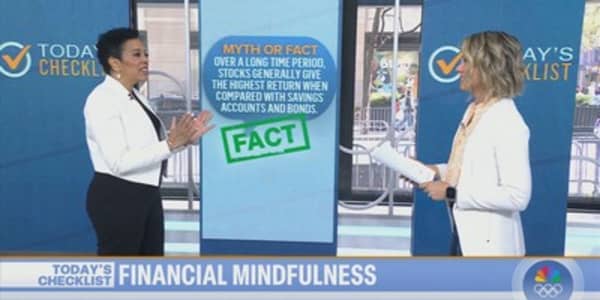
Consumer spending remained remarkably resilient throughout 2023, even in the face of prolonged inflation and high interest rates.
But that's unlikely to continue, according to Jack Kleinhenz, chief economist at the National Retail Federation.
"A year ago, many commentators were skeptical and calling for a recession, but the recession never came. With each passing month, consumers kept spending despite inflation and higher borrowing costs."
"Nonetheless, those tailwinds are not necessarily sustainable," Kleinhenz said in the January issue of NRF's Monthly Economic Review, released Tuesday.
More from Personal Finance:
Deflation vs. disinflation: What's the difference?
Americans are racking up more 'phantom debt'
56 million Americans have been in credit card debt for over a year
Recent reports already show signs of strain.
In the last year, credit card debt spiked to a record high, surpassing $1.08 trillion, according to the latest quarterly report from the Federal Reserve Bank of New York.
Now, more cardholders are carrying debt from month to month and fewer are able to pay off their balances in full.
"We are still largely a paycheck-to-paycheck nation," said Mark Hamrick, senior economic analyst at Bankrate.
We are still largely a paycheck-to-paycheck nation.Mark Hamricksenior economic analyst at Bankrate
So far, consumers have been sustained by very low unemployment. December's jobs report closed out 2023 with another solid hiring gain while the unemployment rate held at 3.7%. Still, economists surveyed by Bankrate expect much slower payrolls growth in the months ahead with the jobless rate edging above the 4% level.
"The labor market looks set to cool further this year, which will impact consumer expectations for employment and wage growth, and, in turn, affect spending decisions," Kleinhenz said. "Spending is elevated relative to current income, and maintaining the recent pace of growth will be increasingly difficult."
What the Federal Reserve will do with interest rates is key to determining borrowing costs and credit conditions going forward, Kleinhenz added. The central bank has already indicated as many as three cuts coming this year. However, even then, credit card APRs aren't likely to improve much.
"Amid all the optimism about what the Federal Reserve might do this year, the high cost of debt is with us for the foreseeable future," Hamrick said.






